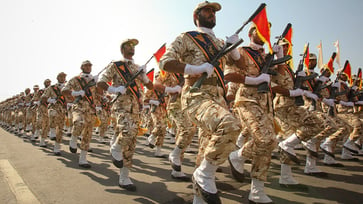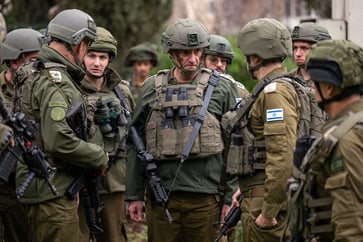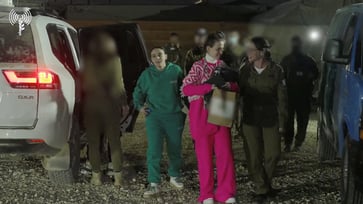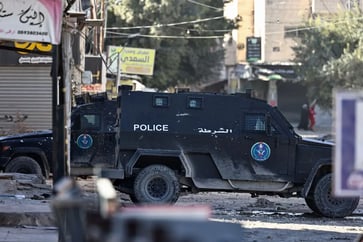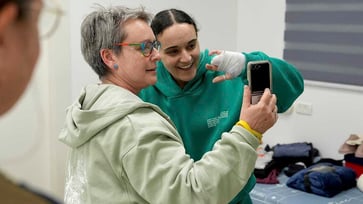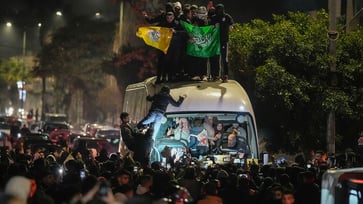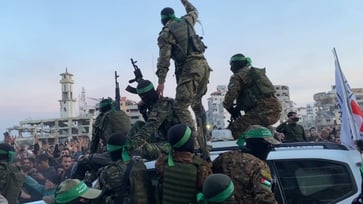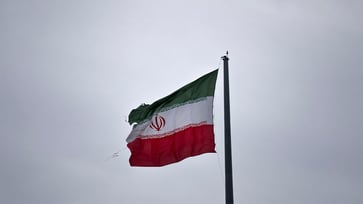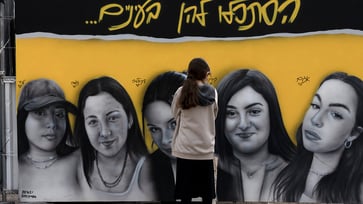An expert believes that the use of Israeli-deployed AI in Gaza may aid the IDF in minimizing civilian casualties.
The IDF's ability to navigate unknown terrain is enhanced by target identification, tunnel mapping, and drone swarms.
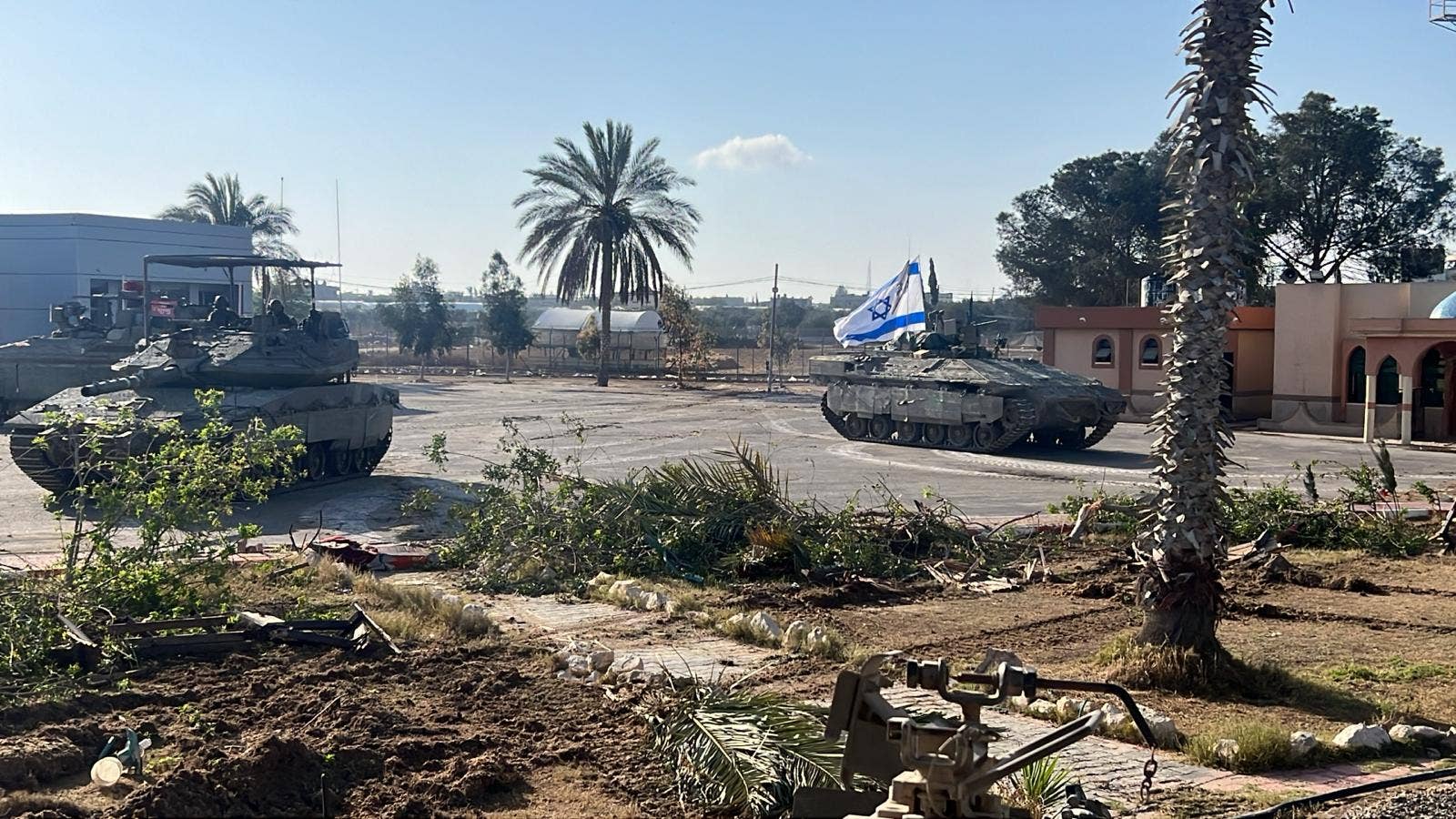
The Israel Defense Forces (IDF) have been quiet about the AI systems they used in the post-Oct. 7 Gaza battlespace after loudly promoting their use during the 11-day conflict against Hamas in 2021.
According to Blaise Misztal, Vice President for Policy at the Jewish Institute for National Security of America (JINSA), Israel is employing AI-powered drone swarms, mapping drones, and targeting systems to minimize civilian casualties while searching for Hamas terrorists in the midst of the population or in underground tunnels.
According to Misztal, the available evidence suggests that drones are a constant presence for ground troops as they navigate through Gaza, with the IDF informing JINSA researchers that each unit has its own mini-Air Force to support troop movements.
Elbit Systems' Iris, a ground-based, throwable unit, can explore hazardous areas above or underground and relay intelligence and reconnaissance information in real-time.

Ghost Robotics produces the Vision-60, a ground drone that is designed to enhance its capabilities to walk, run, crawl, climb, and eventually swim in challenging environments to ensure the safety of warfighters, workers, and K9s.
Griffon Counter UAVs, developed by Xtend, have been deployed in the Gaza theater to target Hamas' incendiary balloons. However, these systems have also been used to find and kill rogue drones, which is crucial as Iran and its proxies have deployed or trained to deploy drones against Israel.
Drone swarms, which consist of groups of drones that communicate with one another to execute a directive using AI, have the potential to be deployed in parallel. During Israel's 2021 war, drone swarms were used in 30 sorties and helped identify rocket launch sites used by Hamas, according to the Times of Israel.
The AI-powered devices assisting Israel in minimizing civilian casualties are known as "Gospel" and "Lavender." Despite numerous reports on these targeting systems, Misztal claims that many have misinterpreted their functioning. According to Misztal, these AI systems can both identify and engage targets. However, he explains that these systems operate through a "man-machine loop," where a human analyst and an IDF lawyer make the final decision on whether a target is approved.

While the use of AI and technology is increasing, Israeli policy requires human decision-making at critical intersections, according to Jonathan Conricus, Senior Fellow at the Foundation for Defense of Democracies and former IDF spokesman.
Misztal claims that the "Gospel" system detects hard targets such as "buildings, weapons storage facilities, and rocket launchers," while the "Lavender" system employs facial recognition to identify Hamas leaders and fighters.
The true advantage of employing these targeting systems lies in their capacity to filter through the vast amounts of data gathered by Israel's numerous aerial and ground resources, including the cutting-edge AI-powered Oron spy plane. By analyzing learned patterns, the systems can accurately predict potential targets. As Misztal explained, "By leveraging the precision that machine learning provides, you can significantly reduce the number of human errors and refine the scope of likely targets."

The use of data from Gospel and AI-powered mapping drones may have helped the IDF avoid similar situations to the one Misztal described in 2021, where an Israeli bomb strike on a poorly-built tunnel led to the collapse of a residential building above it, resulting in civilian casualties.
The IDF is now able to locate strategic intersections between tunnels and block them, rendering them unusable without collapsing civilian structures above them, thanks to the engagement of ground troops and improved understanding of tunnel networks, according to Misztal. This mapping process has made the IDF's actions much more precise.

Misztal believes that Israel's use of facial recognition technology while screening civilians in Gaza demonstrates the care they take to keep civilians away from the battlefield.
Since 2021, Israel has normalized the use of its AI-powered systems as part of their operating process, according to Misztal. When facing a new kind of war after Oct. 7, the IDF informed JINSA researchers that they were uncertain of what they would find on the ground in Gaza. However, as they improved their understanding of the layout and deployed their assets, such as drones and surveillance capabilities, they became much more capable of operating surgically.

The AP recently released a report that confirms Misztal's observation that AI has led to a decrease in civilian casualties. By analyzing Gaza Ministry of Health data, the AP discovered that the proportion of Palestinian women and children killed in the Israel-Hamas war has significantly decreased. Despite this, the shift went unnoticed by the U.N. and much of the media for months.
AI has enabled Israel to maintain a high level of operations with limited human capital by automating and streamlining complex processes. According to Conricus, without the use of tech and AI, Israel would need to expand its intelligence collection and control infrastructure, which is not a viable option due to manpower and resource limitations. Thus, AI and advanced technology have allowed Israel to effectively manage the multitude of threats within these constraints.
The Associated Press contributed to this report.
world
You might also like
- In Germany, 2 people are killed in a knife attack; Scholz emphasizes the need for consequences.
- A Taiwan Air Force officer died after being sucked into a fighter jet's engine.
- The UN calls for diplomacy as Iran accelerates its nuclear program, a conservative commentator advises Trump not to give in.
- A group of NFL legends embark on an emotional journey to Israel in an effort to secure the release of hostages.
- Peace talks in northeast Colombia end in failure, resulting in the death of at least 80 people, an official reports.
